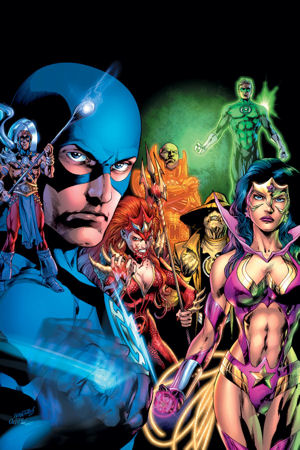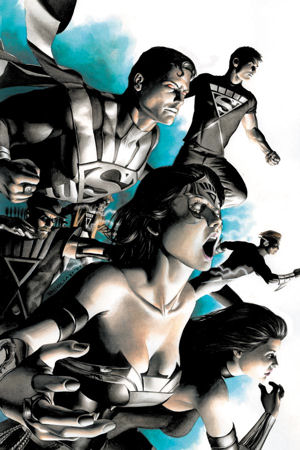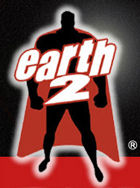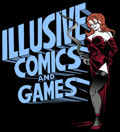Geoff Johns, you've just re-written the history of the
DC Universe, what are you going to do next? Since the other
guys have Disneyland locked up, it's pretty much just a
change in title and formalizing the respect that the entertainment
industry clearly has for the guy. Love him or hate him,
DC's new Chief Creative Officer has to be given respect
for the massive amount he has achieved, and the real good
he has done for fanboys (and fan girls).
With Blackest Night #7, it's safe to predict that this massive event will stand out as Johns' greatest achievement as a writer, unless he tops it. But how can he? It's an exciting and dense story that within the confines of the pages he himself wrote leaves far fewer plot holes than these things usually have. (That's not damning with faint praise; once things get this big, there are bound to be contradictions.)
Each issue has been satisfying, ending with a cliffhanger that then gets picked up to head in directions that may not have been where you thought. To be honest, the cover-featured Emotional Corps - what has Johns called them? - haven't played out quite as effectively as they might have.
But that's also because Johns has two difficult characters in the mix - the Scarecrow and Lex Luthor, both of whom possess dangerous rings to match their personalities. Yes, Jonathan Crane was already committed to inspiring great fear, but he's also crazy. And Luthor's greed has always been the dark side that drove him to being a villain, when he wanted to be an (arrogant) hero if not for that meddling Kryptonian.
Though neither outright betrays the team with this issue, it's the focus on them both that highlights Johns' real thematic achievement, years in planning and development. All along, we've thought that Johns has been about the redemption of Hal Jordan, starting with Green Lantern: Rebirth. It turns out that was just Chapter One in a much larger epic plan, which Blackest Night brings to a (likely temporary) close.
Johns may have provided an almost deus ex machina-like explanation for the fall of Hal Jordan decades ago, but alongside that was another character whose villainy was far better explained by simple arrogance. Suddenly that character comes into sharp focus as a tragic hero. Yet his flaw didn't just lead to his downfall again and again, it was also necessary for him to fall, even by his own admission, in order to reach this moment that will lead into Blackest Night #8.
Maybe Hal Jordan needed redemption, but maybe, just maybe
he isn't the greatest Lantern of them all. We all
knew the obvious color of light to stand against Nekron,
and yet Johns won't let us have a clear case of black and
white.
Kudos to the man for having conceived of this idea from
the beginning, because it's been a long time coming. (You
can catch up by following DC's reading
guide here, though Blackest Night reads well
enough on its own.)
However, it's a comic book, part of an epic graphic novel, and it wouldn't work without the stellar pencils of Ivan Reis. He brings to life so many indelible visions, including just what you get when you get to the center of an Oan. The only slight difficulty he has is in dealing with the dead; dessicated flesh all starts to look alike which can be a problem. I had a hard time distinguishing between Black Hand and Nekron (but then, I'm also remembering Joe Staton's original, more angular and cartoony design).
Very little of this crossover has been disappointing.
Though I'm going to admit to fatigue and a desire to get
back to some self-contained narratives, I know I'm going
to be going back to this one again and again.
Hey,
write to us and let us know what you think!







